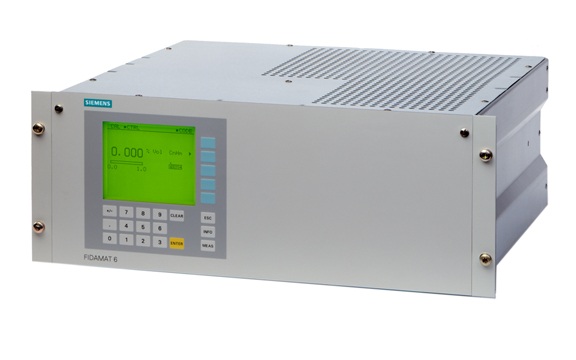FIDAMAT 6
- General Details
- Detail
- Benefits
- Documents
Gas analyzers with an FID (flame ionization detector) are well suited for the continuous total hydrocarbon measurement. In the first approach, the measuring result is proportional to the number of C-atoms in the relevant molecule.
The FIDAMAT versions cover a wide range of applications: From trace measurement of hydrocarbons in pure gases – made possible by high resolution and low differences in the response factors – to total content measurement for hydrocarbons in the presence of corrosive gases, almost all applications can be carried out. A requirement for the latter application is the use of a filter that is free of wear and resistant to corrosion, and the use of a quartz capillary as the measuring gas capillary.
The high, adjustable operating temperature for the internal gas path and the detector also allows the measurement of high-boiling mixtures and the measurement of hydrocarbons at vapour concentrations of up to 100%.
Particular attention has been paid to the safety functions. After an automatic start following the warm-up phase and with automatic measuring operation and self diagnostic. In case of accidental extinguishing of the detector flame, it is automatically re-ignited. If it does not ignite, a warning message is generated and the gas supply is automatically shut off using a solenoid valve. A purging function if the device fails prevents the build up of toxic, corrosive or explosive substances inside the device. Alongside transmission of the fault message via binary output contacts, all status messages can also be called up individually on the display or via the serial interface.
| Max. number of components | 1 |
| Components | Total hydrocarbons |
| Smallest measuring range | 0-10 vpm |
| Housing | 19″ rack unit |
- Wide range of applications: In the presence of up to 100 % H2O vapour, in ultra-pure gas applications, with high-boiling components (up to 200 °C), in the presence of corrosive gases (with preliminary filter)
- Extremely low cross-sensitivity to interfering gases
- Low consumption of combustion air
- Low influence of oxygen on measured value
- Warning and fault messages: For failure of combustion gas, if the flame is extinguished, to indicate pump and filter faults


